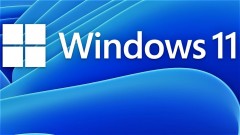

Learn more about WINDOWS 11
https://www.microsoft.com/en-us/windows/windows-11
On October 5, 2021 (see https://www.microsoft.com/en-us/windows/event) Microsoft introduced the upcoming update to its Windows lineup. More than just a collection of fixes and new features, Windows 11 features a cleaner look and feel, offers tighter integration with remote meeting apps like Teams, works nearly identically on desktop, laptop, and tablet PCs, and is now available to the general public (users already running Windows 10), as well as available to OEMs for inclusion on new PCs. Windows 11 makes some demanding hardware requirements, and it is for this reason we have decided to publish this information to avoid any confusion among our users, tech savvy or not.
The main issue that concerns Windows 11 involves running it on older PCs. Microsoft's current system requirements cite a CPU based on Intel's 8th generation architecture, and AMD's Zen 2 architecture (although 7th gen and Zen 1 processors are respectively being tested as well). The one other requirement that Microsoft has not hedged on, however, is the TPM 2.0 revision level that most current PCs lack. TPM, short for Trusted Platform Module, is a CPU-independent processing chip that stores information vital for cryptography and protection in modern PCs. Most computers released within the last 5-10 years have some form of TPM, but are limited to revision 1.2.
MINIMUM SPECIFICATIONS AT TIME OF RELEASE*
CURRENT WINDOWS 11 BASE VERSION IS 23H2, RELEASED OCTOBER 30, 2023.
SECURITY UPDATES ARE APPLIED MONTHLY. FEATURE & BASE VERSION UPDATES WILL BE RELEASED YEARLY.
NEXT PLANNED RELEASE IS 24H2, READ IMPORTANT DETAILS BELOW!
Based on tests run on two legacy systems, we can confirm the following with Windows 11 *build 22000, which is the "release" build. During installation, your build may be updated to a later subversion, such as 22000.434
- Your computer MUST use UEFI, not Legacy BIOS boot mode
- Your computer MUST have Secure Boot turned ON
- Your hard disk MUST be formatted as NTFS with GPT Partition Structure
- You MUST have at least TPM 1.2 turned ON. Tests were run with an Infineon Trusted Platform Module on an Asus BP6375
- Your processor MUST be at least of Core I5 or I7 variety, or AMD equivalent, released in late 2012 or later.
- It is SUGGESTED to have at least 1-4 GB of RAM installed, although Windows 10 is similar in that regard.
- These specifications are subject to change with a future build.
Otherwise... Windows 10 will continue to be supported and updated on those PCs incompatible with Windows 11 until 2025.
There are published workarounds to allow the installation on unsupported hardware; one such example is here... https://www.askvg.com/how-to-bypass-this-pc-cant-run-windows-11-error-and-disable-hardware-check-on-unsupported-devices/
...and here: AtlasOS 11 - experienced users only!
...but this does NOT mean that you are guaranteed to receive security updates from Microsoft, or will be eligible for future free upgrades.
FROM NEOWIN: The recent Windows 11 preview builds [for version 24H2] reportedly contain a change in the required CPU instruction set, which rendered already unsupported processors physically incapable of running Windows 11 version 24H2, with the operating system simply crashing on boot. If you have an old, unsupported computer that runs Windows 11 and you plan to upgrade it to version 24H2, here is how to check if that old timer has what it takes. (read more: https://www.neowin.net/news/how-to-check-if-your-old-computer-can-run-windows-11-version-24h2/)
Visit the links below for direct information from Microsoft as well as to send us your own direct feedback. If you would like your question or personal experience featured in this article, let us know and we will amend it.
Read more about Windows 11's specs and features.
See Windows 11's update history
Questions, comments? Emails are welcome!
About Windows 10

The CURRENT version of Windows 10 is the November 2022 Update, version “22H2.”
https://learn.microsoft.com/en-us/lifecycle/products/windows-10-home-and-pro
See the full WINDOWS 10 UPDATE HISTORY
Important
Windows 10 will reach end of support on October 14, 2025. The current version, 22H2, will be the final version of Windows 10, and all editions will remain in support with monthly security update releases through that date. Existing "long term servicing channel" releases will continue to receive updates beyond that date based on their specific life cycles.
DOWNLOAD THE MEDIA CREATION TOOL TO INSTALL WINDOWS 10 NOW!*
*(In certain cases, you can STILL UPGRADE GENUINE, ACTIVATED WINDOWS 7 HOME AND PROFESSIONAL INSTALLATIONS FOR FREE, although as of October 2023, this may stop working on some builds. If clean installing a copy of Windows 10 where Windows 7 had been preinstalled, please ensure you're using proper media, and take note of your existing GENUINE Windows 7 PRODUCT KEY which you can enter in place of a Windows 10 key.